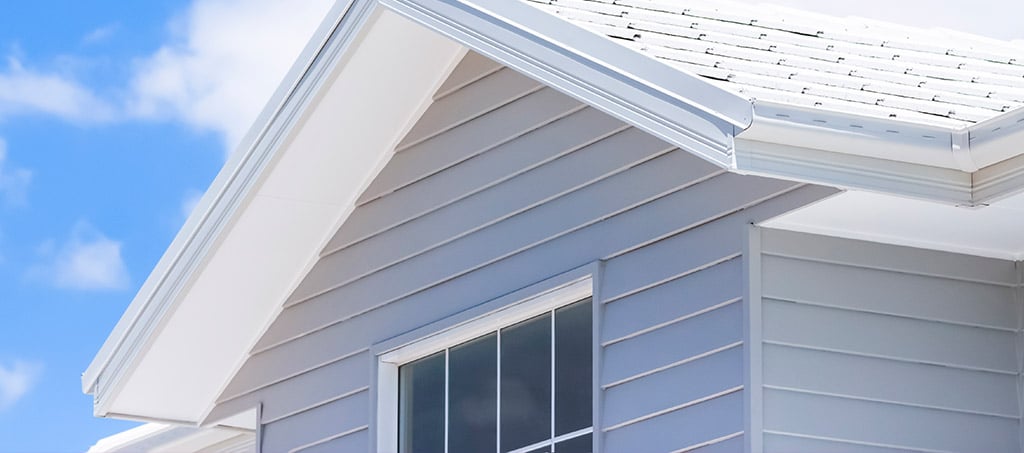BLOG
Subscribe to our newsletter
Is it time for a house recladding?

A well-maintained, quality exterior cladding system is the key to making a good impression on both guests and potential home buyers, but all too often New Zealanders are putting house recladding and other exterior house renovations on the backburner.
The term ‘curb appeal’ comes from the days before the internet when potential buyers would drive by homes and judge their appeal from the roadside. These days, curb appeal is no less important. Homes with tidy exteriors are more likely to get online views and are therefore more likely to attract more offers. Some experts believe that curb appeal can add up to 25 per cent value to your home.
We’re aiming to change that with this quick overview of why you might reclad, how much it costs and how long you can expect it to take.
Why you might reclad
There are a number of reasons why people choose to reclad their homes; chief among them is a need to repair damage from the leaky home crisis.
Between the years of 1994 and 2004, a number of Kiwi homes were designed and built using cladding systems, often from overseas, that in hindsight were not suited to New Zealand’s unique climate conditions. This resulted in widespread weathertightness problems (“the leaky home crisis”), which continue to plague the property market to this day.
Thankfully, the NZ Building Code has come a long way since then, but a leaky home diagnosis is still one of the primary reasons that many New Zealanders choose to go through a reclad.
If you find any of the following symptoms, your home may be suffering from weathertightness issues:
-
Leaks or mould
-
Bulging or cracked walls
-
Warped flooring
-
Musty smells
-
Persistent allergy symptoms.
For more information on signs of a leaky home, investigate this resource from the New Zealand government.
Not every reclad means a leaky home
Of course, it may simply be that you want to refresh your exterior; for example, replacing dated plasterboard with a more modern weatherboard equivalent.
People don’t reclad just because of weathertightness issues, and a tidy, recently-renovated exterior could be the keystone in revamping your home’s look (or securing a strong home sale).
Suggested reading: Planning a renovation, from what needs consent to what adds the most value.
Partial vs full recladding
If you choose to go ahead with a reclad, you have the choice of doing a full reclad, where all of the cladding on your home is replaced, or a partial reclad, where only a specific area is replaced.
Advantages of a full reclad:
-
Fixes any and all possible damage
-
Stops buyers from thinking you are hiding something behind a partial reclad—though a partial reclad does allow you to complement existing cladding with a new style (mixed cladding), introducing unique architecture.
-
Gives you the opportunity to adjust cladding features such as flashings and eaves, as well as improve weathertightness and thermal efficiency.
Disadvantages of a full reclad:
-
Disrupts living patterns (you have to move out while the reclad occurs)
-
Can take weeks to complete
-
Generally more expensive than a partial reclad.
How much does recladding cost?
The total cost of a reclad can be extremely variable, depending on the size of the home and, in the case of a reclad due to damage, the extent of the damage.
This is why it’s difficult for contractors to provide a fixed cost for a reclad. They won’t know how much work is required until the original cladding is stripped back, and that isn’t the only factor: like most renovation projects, the site conditions also affect the cost, particularly in terms of rocky or steep terrain that requires specialist equipment.
This said, it is possible to provide a very broad, worst-case-scenario ballpark figure. Refresh Renovations puts a full reclad at about $40,000 for a single-storey home and $80,000 for a two-storey home1, plus the building consent costs of $5,000 to $10,000.
This figure will vary depending on materials and design styles and, as mentioned, the presence (or lack thereof) of any damage underneath the cladding.
How long does recladding take?
Recladding generally takes 12 to 16 weeks, but can often take a lot longer, particularly if the weather is bad.
This timeline can become problematic for some homeowners, as you can’t continue to live in the home while the reclad takes place. You have to find alternative accommodation with friends, family, short-term rentals or hotels for the duration of the reclad.
Tips and tricks for a smooth reclad
To get the best price estimate and speed up the reclad process itself, there are a few strategies you can employ:
-
Ensure you have details on past damage and history of the home. These can be accessed from the local council as a Land Information Memorandum.
-
Access the original home plans to provide more information for a quote, typically through a Project Information Report.
-
Pre-book inspections for after the reclad is complete, as these inspections can take several weeks to take place.
Download our home renovations guide for more tips and tricks on planning a stress-free renovation!
1. Refresh Renovations, 2016


